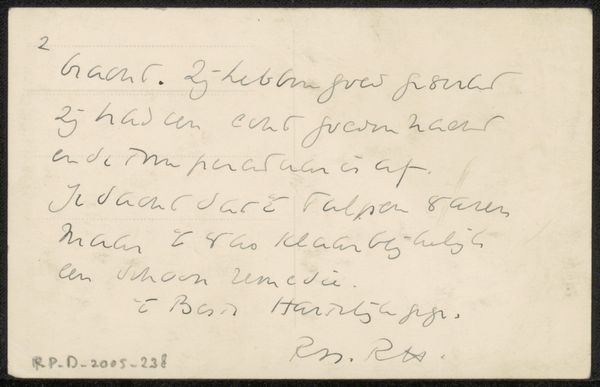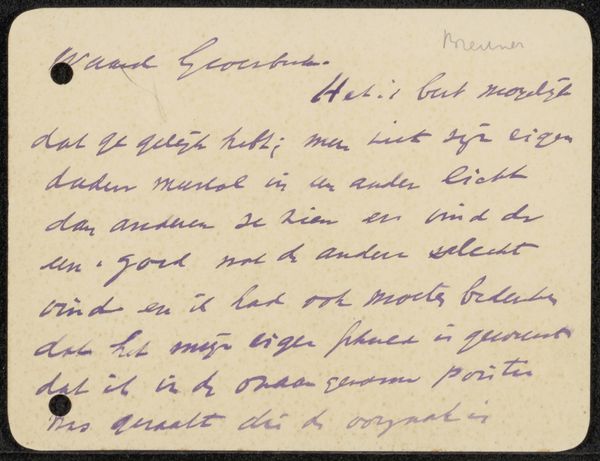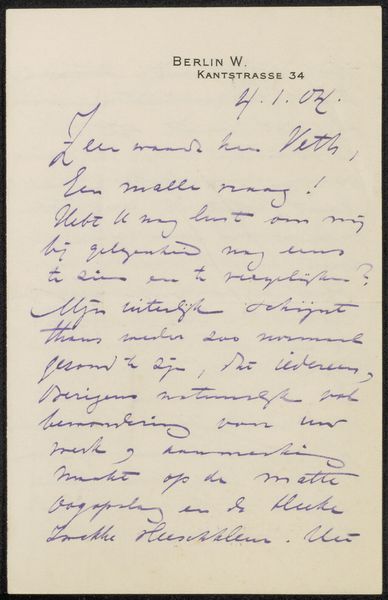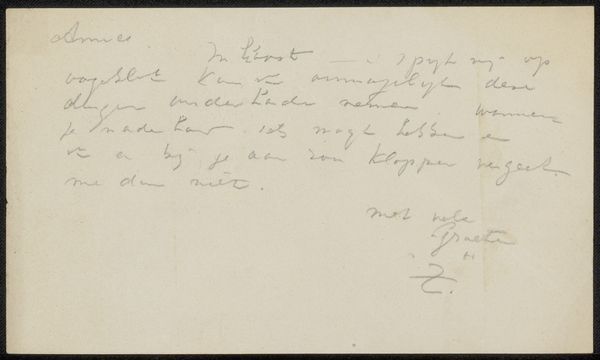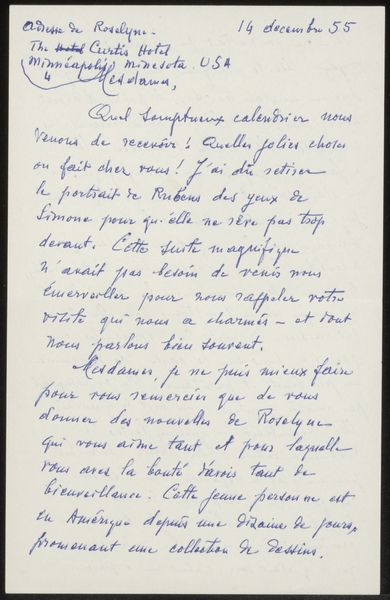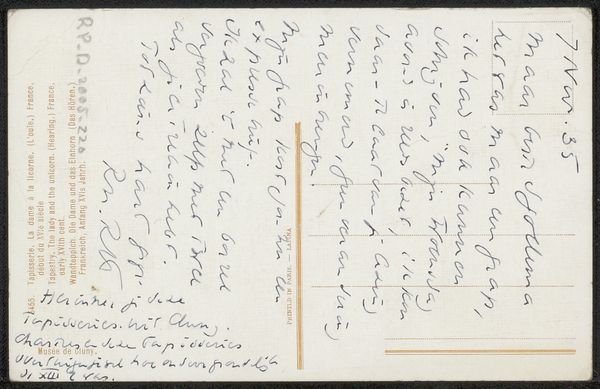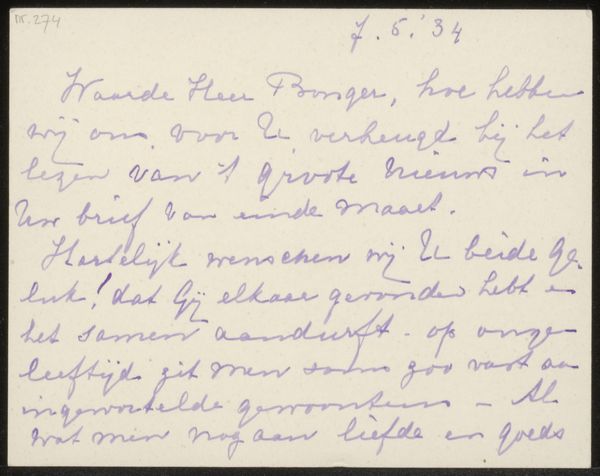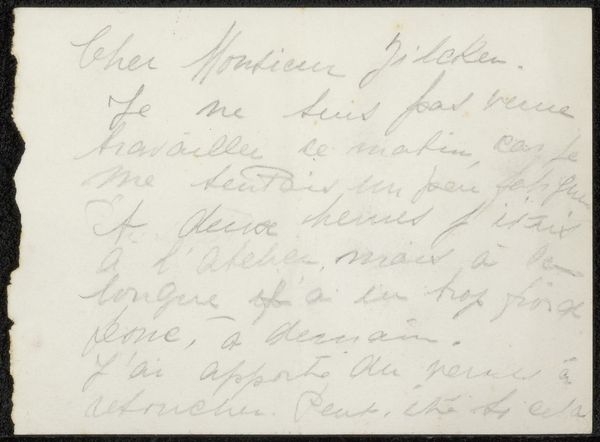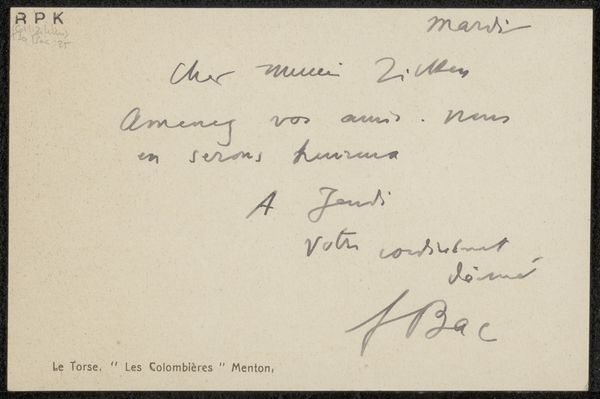
drawing, ink, pen
#
portrait
#
drawing
#
hand-lettering
#
hand drawn type
#
hand lettering
#
personal sketchbook
#
ink
#
hand-drawn typeface
#
ink drawing experimentation
#
pen-ink sketch
#
ink colored
#
symbolism
#
sketchbook drawing
#
pen
#
sketchbook art
Copyright: Rijks Museum: Open Domain
Curator: Here we have Fernand Khnopff's "Brief aan Philip Zilcken," created sometime before 1902. It’s an ink drawing. What are your initial impressions? Editor: It feels incredibly personal. Just the intimate scale and delicate, looping lines of the ink handwriting—it’s immediately inviting, yet secretive. Curator: Absolutely. Khnopff was part of a very interesting circle in Brussels. He and Zilcken, another Belgian artist, were part of this avant-garde scene. Editor: Looking at the strokes, the pressure varies subtly, giving each word a life of its own. It makes you want to decipher every curve. Curator: These sorts of personal documents can unlock our understanding of the relationship among artists. Letters often served as a vital form of connection for artists to stay in touch and offer social support. Editor: It seems quite informal. Notice how the flourishes give it an air of nonchalance, a certain lightness of touch, even while clearly being very deliberate. It walks the line between art and personal communication, almost a performance in its own right. Curator: Precisely! The content of this letter provides crucial context for understanding Khnopff's working method and artistic relationships, even as a simple “thank you”. Editor: So, even a simple note can become a crucial piece of the puzzle, providing insight into an artist’s mind and its connection to other minds through subtle composition choices. It’s not just words, but deliberate choices made in terms of texture, shape, and form, to emphasize or to evoke. Curator: Exactly! In examining the social dimensions of Khnopff's professional life, even a sketch becomes invaluable to us. Editor: An unexpected doorway into the artist's world. I'll never look at handwriting the same way again.
Comments
No comments
Be the first to comment and join the conversation on the ultimate creative platform.
